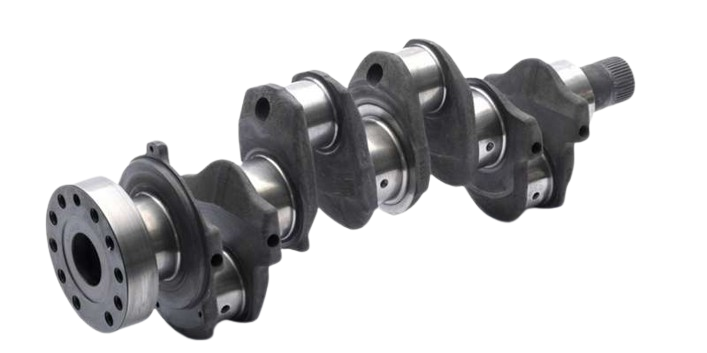When it comes to the smooth and efficient operation of an internal combustion engine, one critical component plays a pivotal role – the crankshaft. Often referred to as the “backbone of the engine,” the crankshaft converts the linear motion of pistons into rotational motion, enabling the vehicle to move forward.
What is a Crankshaft?
A crankshaft is a mechanical component of an engine that works in tandem with pistons, connecting rods, and bearings. It is responsible for transferring power generated in the combustion chambers to the drivetrain, ultimately propelling the vehicle. Made from high-strength steel or cast iron, the crankshaft must withstand extreme forces, high temperatures, and continuous rotational stress.
How Does a Crankshaft Work?
The working mechanism of a crankshaft revolves around a simple yet effective principle.
- Power Stroke: The combustion of fuel in the cylinder generates a force that pushes the piston downward.
- Connecting Rod Action: The connecting rod transfers this linear movement to the crankshaft.
- Rotational Conversion: The crankshaft, through its offset crankpins, transforms the reciprocating motion of the piston into rotational motion.
- Flywheel Assistance: The flywheel attached to the crankshaft helps smooth out the motion, ensuring a steady power delivery.
Key Components of a Crankshaft
A crankshaft comprises several essential parts that contribute to its function:
- Main Journals: These rest in the engine block and provide support.
- Crankpins: Offset from the main journals, they connect to the connecting rods.
- Counterweights: Help balance the crankshaft and reduce vibrations.
- Oil Passages: Allow lubrication to minimize friction and wear.
Types of Crankshafts
Crankshafts come in various designs depending on the engine type and application:
- Flat-plane Crankshaft: Common in high-performance sports cars, it offers better throttle response but generates more vibration.
- Cross-plane Crankshaft: Found in most V8 engines, this design provides smoother operation by balancing out forces.
- Forged Crankshaft: Manufactured from a solid billet of metal, it is highly durable and used in high-performance engines.
- Cast Crankshaft: Made through a casting process, it is cost-effective and suitable for standard engines.

Common Crankshaft Problems
Despite its robust design, a crankshaft can develop issues over time, such as:
- Crankshaft Wear: Due to inadequate lubrication or debris in the oil.
- Crankshaft Bending: Occurs under excessive load or high-speed stress.
- Crankshaft Cracks: Develop from metal fatigue, impacting engine performance.
- Bearing Failure: Leads to improper rotation and potential engine damage.
Crankshaft Manufacturing Process
The manufacturing of crankshafts involves several intricate steps to ensure durability and precision:
- Material Selection: High-quality steel or cast iron is chosen.
- Forging or Casting: Depending on the required strength and application.
- Machining: The crankshaft undergoes precision machining to meet exact specifications.
- Heat Treatment: Enhances strength and resistance to wear.
- Grinding & Polishing: Ensures a smooth surface for optimal performance.
- Balancing: Reduces vibrations and ensures smooth engine operation.
Crankshaft Applications
Crankshafts are widely used in:
- Automobile Engines: Cars, trucks, and motorcycles.
- Industrial Machinery: Generators, compressors, and heavy-duty equipment.
- Marine Engines: Ships and boats.
- Aviation: Aircraft piston engines.
Conclusion
The crankshaft is an indispensable component of an engine, ensuring seamless power transmission and vehicle movement. Its design, durability, and efficiency directly impact engine performance. For automotive enthusiasts, understanding the crankshaft’s function and maintenance is key to ensuring a vehicle’s longevity and optimal performance.
For high-quality crankshafts that ensure reliability and efficiency, trust Quintess International – a leader in premium automotive components. Contact us today to learn more!


